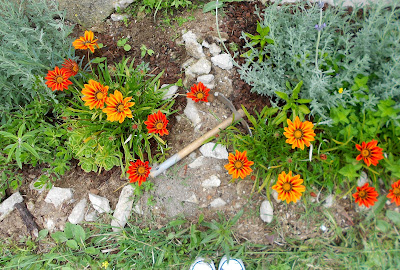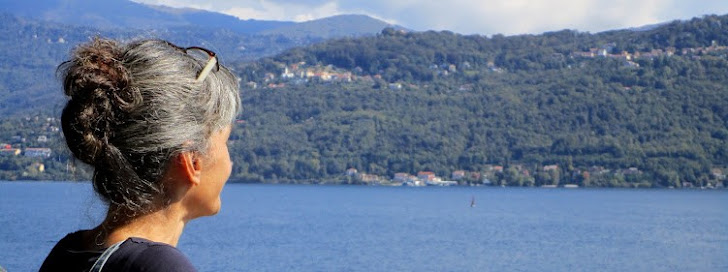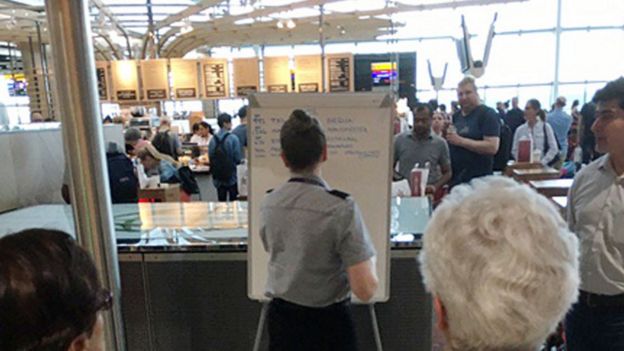 |
| Monica Pinheiro, license CC BY-NC-SA (CC) |

"More than conversation at the interface, it is creative assemblages like these that explore and elaborate the particular dynamic capacities that digital media afford and the ways that through them humans and machines can perform interesting new effects (...) in uniquely particular ways." Lucy Suchman (2009). Human-machine reconfigurations: plans and situated actions.
Jun 12, 2017
Jun 11, 2017
May 28, 2017
Apr 24, 2017
Ginko
Ginko Tree, the 'bearer of hope'. Amsterdam canals, June 2016. Monica Pinheiro, license CC BY-NC-SA (CC)
Feb 2, 2017
(im)mobility systems
"(...) interdependent systems of 'immobile' material worlds, and especially exceptionally immobile platforms (transmitters, roads, garages, stations, aerials, airports, docks) structure mobility experiences. The complex character of such systems stems from their multiple fixities or moorings, often on a substantial physical scale. Thus 'mobile machines', such as mobile phones, cars, boats, aircraft, trains and computer connections, all presume overlapping and varied time-space immobilities. There is no linear increase in fluidity without extensive systems of immobility."Anthony Elliott & John Urry (2010). Mobile Lives. Routledge, p. 20.
 |
October 16, 2009 Image by Monica Pinheiro, license CC BY-NC-SA (CC) |
Feb 1, 2017
Human-Built World
"Technology is messy and complex. It is difficult to define and to understand. In its variety, it is full of contradictions, laden with human folly, saved by occasional benign deeds, and rich with unintended consequences." Hughes, T. P. (2004). Human-Built World: How to Think about Technology and Culture. University Of Chicago Press.
 |
| Image by Monica Pinheiro, license CC BY-NC-SA (CC), November 17, 2009 |
Jan 21, 2017
Paths
What if success was measured by the number of beings living better? What if the purpose of life was making meaningful things like taking care of the world that sustains our lives? What if we defined impact indicators that measured the number of people that can access technology? What if our paths could lead to a better world instead of leading to more technology for the few? What if our policies could lay the foundations for more organic infrastructures that require less energy? What if our time was spent in meaningful activities? What if public service meant working for the betterment of the vast population? What if government listened to the majority of workers and what they say about the individuals that are nominated to run public organisms? What if ... Image by Monica Pinheiro, license CC BY-NC-SA (CC)
Jan 15, 2017
Sep 30, 2016
Carry on
"Remember that your strength is also built on what you lost." Image by Monica Pinheiro, license CC BY-NC-SA (CC)
Sep 24, 2016
sketch
"Instead of generic perfection all at once you would want to make a particular structure that started as a sketch, capable of evolving." Richard Sennette, 2009. The Craftsman.
by
Monica Pinheiro
0
comments
 Labels:
books,
building infrastructure,
home,
infrastructure,
sustainable
Labels:
books,
building infrastructure,
home,
infrastructure,
sustainable
Aug 15, 2016
Visualizing energy data
Chart from USA energy data ( http://energyliteracy.com ):
 |
| onsite interactive map shows energy wasted in different sectors |
"By clicking through the chart, you can see exactly how much energy is used for every activity. (...) Almost 1% is used just to pump natural gas around pipelines; 2% goes to making cardboard and other paper products. Around 16% is used to grow, distribute, and cook food. Looking at the total picture helps make the point that some of the ways that we think about energy aren't quite right. Refining petroleum uses about 6% of total energy in the country, but isn't considered when we think about fuel economy in cars. (...) Mining oil and gas uses even more energy." (in link)
by
Monica Pinheiro
0
comments
 Labels:
chart,
energy,
infrastructures,
USA,
visualizing information,
wast
Labels:
chart,
energy,
infrastructures,
USA,
visualizing information,
wast
Dec 20, 2015
Nov 12, 2015
electricity
Boyer, Dominic. "Anthropology Electric." Cultural Anthropology 30, no. 4 (2015) 531–539:
"These days, beyond spectacular weather events or spectacular failures like blackouts, electricity hides in plain sight, whether stored in batteries or flowing in the electrical wires that festoon our social landscapes. We conveniently ignore whole electroscapes until something goes awry."
by
Monica Pinheiro
0
comments
 Labels:
ANT,
electricity,
energy,
grid,
infrastructure,
layers,
networks,
regulations,
worknets
Labels:
ANT,
electricity,
energy,
grid,
infrastructure,
layers,
networks,
regulations,
worknets
Nov 10, 2015
technology non-use
Eric P.S. Baumer, Morgan G. Ames, Jenna Burrell, Jed R. Brubaker, and Paul Dourish (2015). Why study technology non-use? First Monday, Volume 20 (11), November 2nd:
"Technology non-use offers a fascinating sociotechnical phenomenon worthy of study per se. However, it also provides an opportunity to rethink how we approach, study, and conceptualize human relationships with, and through, technology."
Oct 19, 2015
Oct 8, 2015
information fragmentation
M. Kljun, “The information fragmentation problem through dimensions of software, time and personal projects,” Ph.D. dissertation, Lancaster University, 2013.
"The findings show (i) the extensive information fragmentation in each individual PIM tool besides cross-tool fragmentation, (ii) the information overload preventing focusing on the subset of fragmented project related information and changing focus over time, and (iii) the importance of support information (information scraps) and its integration into project flow." [pdf]
by
Monica Pinheiro
0
comments
 Labels:
fragmentation,
information artefacts,
information overload,
PIM
Labels:
fragmentation,
information artefacts,
information overload,
PIM
Subscribe to:
Comments (Atom)








